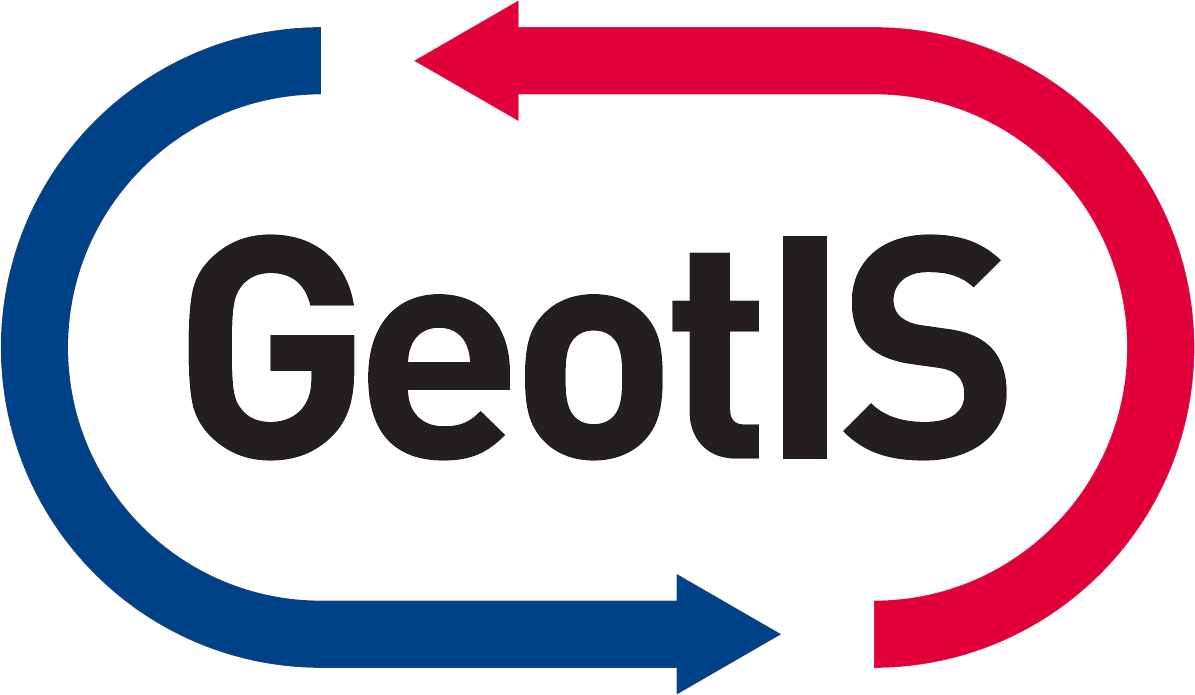Herkunft der verwendeten Daten
Temperatur
- 3D-Untergrundtemperatur
- Beteiligte Institutionen: LIAG
- Bearbeiter: Agemar, T. Agemar, T. (2022) 3D Subsurface Temperature Model of Germany and Upper Austria. Compilation of gridded data (25 MB) and documentation. Agemar, T., Schellschmidt, R. & Schulz, R. (2012): Subsurface Temperature Distribution of Germany. – Geothermics, 44: 65-77.
Geothermische Nutzungsmöglichkeiten
- Ampelkarten zur geothermische Standorteignung für Erdwärmesonden und für Erdwärmekollektoren
-
Bundesland Datenerhebung/-bearbeitung Datenaufarbeitung für GeotIS Datenquelle Bayern Bayerisches Landesamt für Umwelt Ravidà, D.C.G.1, Dussel, M.1 Umweltatlas Bayern Bremen Geologischer Dienst für Bremen Ravidà, D.C.G.1, Dussel, M.1 geoportal.bremen.de Hamburg Geologisches Landesamt Hamburg (BUKEA) Ravidà, D.C.G.1, Dussel, M.1 geoportal-hamburg.de Hessen Hessisches Landesamt für Naturschutz, Umwelt und Geologie Ravidà, D.C.G.1, Dussel, M.1 Geologie Viewer Hessen Niedersachsen Landesamt für Bergbau, Energie und Geologie Niedersachsen (LBEG) Ravidà, D.C.G.1, Dussel, M.1 nibis.lbeg.de Rheinland-Pfalz Landesamt für Geologie und Bergbau (LGB-RLP) Ravidà, D.C.G.1, Dussel, M.1 geoportal.rlp.de Thüringen Thüringer Landesamt für Umwelt, Bergbau und Naturschutz (TLUBN) Stefanak, M.T.2, Ravidà, D.C.G.1 antares.thueringen.de - Ampelkarte zur geothermische Standorteignung für Erdwärmesonden
-
Bundesland Datenerhebung/-bearbeitung Datenaufarbeitung für GeotIS Datenquelle Baden-Württemberg Landesamt für Geologie, Rohstoffe und Bergbau Baden-Württemberg Ravidà, D.C.G.1, Dussel, M.1 Informationssystem Oberflächennahe Geothermie Baden-Württemberg Berlin Senatsverwaltung für Mobilität, Verkehr, Klimaschutz und Umwelt Stefanak, M.T.2, Ravidà, D.C.G.1 Geoportal Berlin Brandenburg Landesamt für Bergbau, Geologie und Rohstoffe des Landes Brandeburg (LBGR) Stefanak, M.T.2, Ravidà, D.C.G.1 Geoportal LBGR Brandenburg
MetaVer-Portal BrandenburgMecklenburg-Vorpommern Landesamtes für Umwelt, Naturschutz und Geologie (LUNG) Ravidà, D.C.G.1, Dussel, M.1 umweltkarten.mv-regierung.de Nordrhein-Westfalen Geologischer Dienst NRW Stefanak, M.T.2, Ravidà, D.C.G.1 Geothermie in NRW - Geologischer Dienst NRW
GEOportal.NRWSaarland Landesamt für Umwelt- und Arbeitsschutz (LUA) Stefanak, M.T.2, Ravidà, D.C.G.1 geoportal.saarland.de Sachsen Sächsisches Landesamt für Umwelt, Landwirtschaft und Geologie Nattrodt, A.4, Hofmann, K.4, Stefanak, M.T.2, Ravidà, D.C.G.1 LUIS - Landwirtschaft- und Umweltinformationssystem für Geodaten Sachsen Sachsen-Anhalt Landesamt für Geologie und Bergwesen Sachsen-Anhalt LAGB5, Stefanak, M.T.2, Ravidà, D.C.G.1 Kartenserver LAGB Sachsen-Anhalt Schleswig-Holstein Landesamt für Umwelt des Landes Schleswig-Holstein (LfU) Ravidà, D.C.G.1, Dussel, M.1 umweltportal.schleswig-holstein.de - Die Erhebung und Bearbeitung der Daten erfolgte durch die geologischen Dienste der Bundesländer.
- Vereinheitlichung der Daten, Erstellung der bundeseinheitlichen Karte und die technische Umsetzung in GeotIS erfolgte durch folgende Institutionen: 1, 2geoENERGIE-Konzept GmbH, 3LIAG, 4Sächsisches Landesamt für Umwelt, Landwirtschaft und Geologie, Referat 104 Rohstoffgeologie, 5Landesamt für Geologie und Bergwesen Sachsen-Anhalt, Dezernenat für Hydrogeologie Die ursprünglichen Open-Source-Ressourcen und Daten, die für die Realisierung dieser Karte verwendet wurden, befinden sich auf dem Geoportalen der jeweiligen Länder (siehe Tabelle).
- Grabbarkeitskarte
-
Dem Datensatz liegen die Bodengrenzen der BÜK250 der BGR zugrunde. Die Methode zur Ableitung der potentiellen Grabbarkeit der Böden in Deutschland 1:250.000 ist im Methoden-Wiki Bodenkunde der BGR als Verknüpfungsregel 1.35 dokumentiert. Ursprünglich für größere Maßstäbe konzipiert, ist hier bei der Anwendung auf kleinermaßstäbige Bodenflächendaten allerdings mit Einschränkungen in der Aussagegenauigkeit zu rechnen. Hinzu kommt, dass der Datensatz noch nicht abschließend qualitätsgesichert ist.
Ergänzende Angaben: www.deutsche-rohstoffagentur.de
Zitierung: GRABBARKEIT250 V0.3, © BGR, Hannover, 2024.
- Gebiete mit geothermischen Potenzial (Geothermieatlas)
- Beteiligte Institutionen: LIAG, BGR
-
Karte Referenz Karte A - nachgewiesenes hydrothermisches Potenzial
Karte A - entfallenes GebietSchulz et al. (2013)
Mraz, E. (2019)Karte B - vermutetes hydrothermisches Potenzial Schulz et al. (2013) Karte C - petrothermisches Potenzial Schulz et al. (2013) Karte D - Kompilation der Karten A-C Schulz et al. (2013) Untersuchungswürdige Gebiete für CO2-Einlagerung Schulz et al. (2013) Untersuchungswürdige Gebiete für Geothermie Moeck, I. (2018)
Mraz, E. (2019): Reservoir characterization to improve exploration concepts of the Upper Jurassic in the southern Bavarian Molasse Basin – Dissertation, Technische Universität München, Ingenieurfakultät Bau Geo, Umwelt Lehrstuhl für Ingenieurgeologie, 122 S.
Herleitung untersuchungswürdiger Gebiete anhand geologischer Systeme aus der geologischen Karte der Bundesrepublik Deutschland - GK1000 - (persönliche Kommunikation Moeck, 2018) - Download Shape Files
Toloczyki, M.; Trurnit, P.; Voges, A.; Wittekindt, H.; Zitzmann, Arnold (2010): Geologische Karte der Bundesrepublik Deutschland 1:1.000.000 (GK1000), Bundesanstalt für Geowissenschaften und Rohstoffe, Hannover Suchi, E.; Dittmann, J.; Knopf, S.; Müller, C. & Schulz, R. (2014): Geothermie-Atlas zur Darstellung möglicher Nutzungskonkurrenzen zwischen CO2-Einlagerung (CCS) und Tiefer Geothermie in Deutschland. - ZDGG Band 165 Heft 3, 439-453 Schulz et al. (2013): Geothermieatlas zur Darstellung möglicher Nutzungskonkurrenzen zwischen CCS und Tiefer Geothermie.
Endbericht, LIAG, Hannover, URL: www.geotis.de/homepage/.../Endbericht_Geothermie_Atlas.pdf
- Geothermische Anlagen
- Quellenangaben zu den Produktionsdaten der geothermischen Anlagen finden Sie auf den Detailseite der jeweiligen Anlage: Übersicht Geothermische Anlagen
- Konzessionsgebiete
- Baden-Württemberg: Regierungspräsidium Freiburg, Landesamt für Geologie, Rohstoffe und Bergbau (LGRB)
- Bayern: Bayerisches Landesamt für Umwelt (LfU), Außenstelle München (vormals Bayer. GLA)
- Niedersachsen: Landesamt für Bergbau, Energie und Geologie (LBEG), Hannover
- Hamburg: Landesamt für Bergbau, Energie und Geologie (LBEG), Hannover
- Schleswig-Holstein: Landesamt für Bergbau, Energie und Geologie (LBEG), Hannover
Exploration
- Bohrungen
- Kohlenwasserstoff-Fachinformationssystem (KW-FIS), LBEG
- Fachinformationssystem Geophysik (FIS GP), LIAG
- Seismik
- Seismik 2D; © Landesamt für Bergbau, Energie und Geologie, LBEG
- Seismik 2D; © Regierungspräsidium Freiburg, LGRB(Baden-Württemberg)



 Weiter auf Deutsch
Weiter auf Deutsch  Change language to English
Change language to English 
